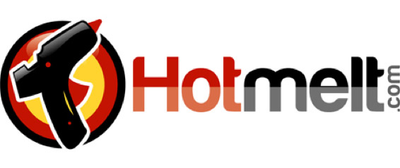If you are looking to make the switch to hot melt adhesives for your business’s packaging and shipping needs, then you are already on the right track for cutting your packaging costs. However, if you are currently utilizing outdated hand-administered adhesive alternatives, such as adhesive tape or staples, for your business, taking advantage of hot melt systems is an excellent opportunity to invest in your company and cut future costs.
Various industries have already benefited from the use of hot melt adhesives, from printing to packaging, automotive to construction. This is because hot melt adhesives are versatile, with possible applications including crafting and hobbies, woodworking, labeling, and, most notably, packaging. You may be wondering just how cost-effective hot melt systems can be for your bottom line. This will depend on your specific packaging needs, your working environment, and your existing adhesive system.

What Is Hot Melt?
If you are new to the hot melt market, there are a few relevant terms you should be aware of concerning how it is commonly used, as well as tips and tricks for the best hot melt practices and results. Hot melt materials, also known as hot glue, typically consist of thermoplastic polymers that become liquid as they are heated for easier application and then return to a solid state as they cool, welding two materials together in a solid adhesive bond.
Types
There are various types of hot melt polymers, and each is specifically suited for a certain use.
- Ethylene Vinyl Acetate, EVA: EVA is often used for packaging and assembly. It is perhaps the most-often used and economical of the polymers available on the market, and it is often referred to as standard hot melt.
- Polyamide, PA: Polyamide is a polymer that is usually pricier than standard hot melts because it is used in cases where the adhesion has to stand up to more extreme temperatures.
- Polypropylene, PP: Polypropylene is typically administered as a spray adhesive and features a longer setting time for a better seal.
- Polyurethane, PUR: PUR polymers are the latest development in hot melt adhesives. They act in a manner that is similar to EVA or standard hot melt. However, as PUR polymers solidify, they continue to absorb moisture for a time. This creates a permanent chemical change in the polymer that increases the adhesive's resistance to chemicals and heat. The resistance that is formed makes PUR polymers particularly suitable for woodworking.
The various hot melts feature numerous properties that can financially benefit your business in place of your current adhesive system.
Longer Shelf Life
Hot melt has a longer shelf life than most other adhesive systems, which means you will not be wasting money by throwing away unused, expired product. While other systems, such as solvent-based adhesives, max out after one year, standard hot melt can be stored for two years or more when stored properly. Additionally, hot melt also has a longer pot life, or aging performance, than solvent-based adhesives.
Increase Speed and Output
Rapid curing time is not the only advantage of hot melt adhesive systems speed-wise. It is also fast-acting, and standard packaging hot melt produces a solid bond within one to two seconds. The amount of time required for hot melt to set or cure, while dependent on the specific type, can also be adjusted according to the job it is needed for. Unlike tape dispenser packaging systems, in which production has to be stopped to refill the dispenser, packaging with hot melt does not require disruption of your assembly line.
A Better Seal, Every Time
Hot melt adhesive also produces an excellent seal quality. The bond and high tack of cured hot melt seals are not only as strong as those produced by PVA and UF adhesives, but they are also water, humidity, and chemical resistant and can stand up to higher pressure. You will not have to worry about the bond coming loose in almost any situation, as it can also stand up to temperature extremes. This means you won’t be wasting your time or materials completing a task multiple times.
Cost
Don’t forget the competitive cost of hot melt products in comparison to other adhesives. In fact, hot melt materials usually run at about a third of the price of tape when used to complete a similar job. This is extremely helpful for companies with a larger output that are looking to buy bulk hot melt, but it can provide cost savings for low-volume applications as well. While hot melt does require an initial investment in application tools, this cost is quickly covered by material cost in the long run.

Professional and Streamlined Packaging
Hot melt adhesives provide your company with the highest-quality adhesive solution. Your company’s reputation is important, and packaging and shipping with cheap, unreliable materials will eventually affect that reputation. Packages sealed with hot melt look better and leave your product clean and clear of copious amounts of tape, which can interfere with labeling, logos, and the overall integrity of the product. Whether you are looking to take advantage of hot melt adhesive systems for your established business, latest venture, or your hobbies, there is likely a cost-saving hot melt available for your needs.

